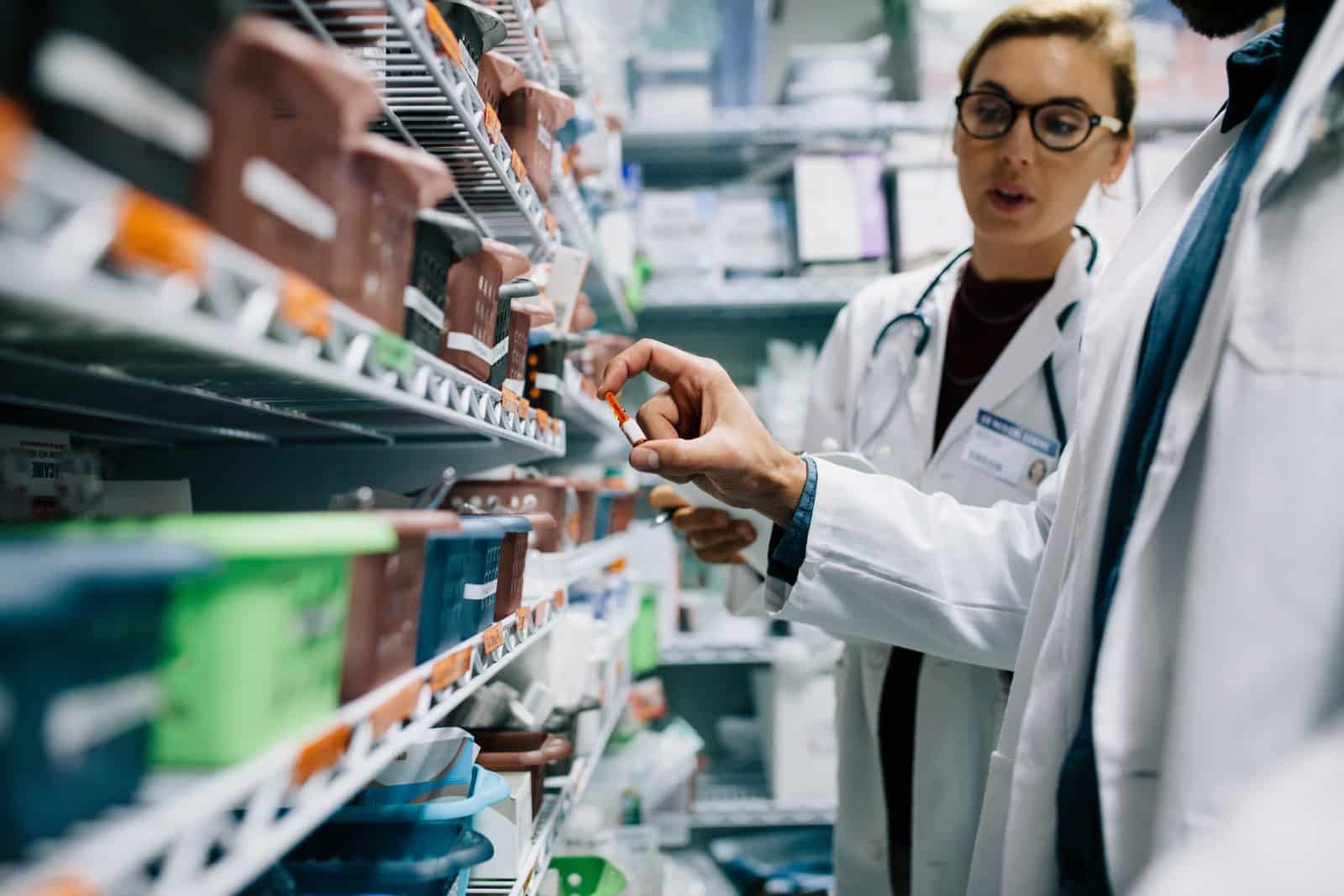New pharmaceutical treatments for diabetes and weight loss could provide significant benefits for the U.S. economy, according to new research by banking multinational Goldman Sachs.
‘Miracle’ Weight Loss Drugs Flood the Market

In the last year, ‘miracle’ weight loss drugs like Ozempic and Wegovy have flooded U.S. headlines as celebrities and medical professionals tout their effectiveness for people who struggle to lose excess weight.
Diabetes and Obesity

Both Ozempic and Wegovy contain semaglutide, a peptide-1 (GLP-1) agonist, and while they were initially created to treat diabetes, they are now best known as combatants against obesity.
While Ozempic is not technically regulator-approved for weight loss, Wegovy is.
A Boon for U.S. GDP?

But these new pharmaceuticals may offer more social good than just reducing obesity rates.
A new research report from Goldman Sachs estimates that these pharmaceuticals could add a 0.4 to 1% boost to the U.S. GDP by 2030.
Trillion Dollar Products

Considering that the U.S. GDP came in at approximately $28 trillion in the fourth quarter of 2024, a 1% increase would equal over a trillion dollars in the coming four years if Goldman Sachs estimates are realized at their most optimistic.
A Possible Scenario

Their estimates were based on a scenario where “30 million users take the drugs and 70% experience benefits,” and that a 1% GDP increase was possible if 60 million Americans were taking the drug.
Major Increases Predicted

Goodman Sachs analysts predicted the rate of all GLP-1 usage would increase to 10 to 70 million people in the U.S. alone.
Economic Spillover

“If GLP-1 usage ultimately increases by this amount and results in lower obesity rates, we see scope for significant spillovers to the broader economy,” the report noted.
Not Unrealistic So Far

This may not be an unrealistic prediction, as nine million prescriptions for Ozempic and other purported weight loss drugs were written in the last quarter of 2022, according to a 2023 Trends Shaping the Health Economy Report.
300% Quarterly Increase

Quarterly prescription rates for these GLP-1 medications have increased by 300% between 2020 and 2022, and the trend is unlikely to stop anytime soon.
How Does It Work?

But how will this ‘superdrug’ make such a significant economic impact? Well, let’s start with obesity.
According to the US Centers for Disease Control and Prevention, the U.S. had an obesity prevalence of 41.9% between 2017 and 2020, with obesity rates climbing continuously for the last few decades.
Obesity and the Workplace

Goldman Sachs posits that obesity leads to poorer health outcomes, which negatively affects economic production.
“Academic studies find that obese individuals are both less likely to work and less productive when they do,” the report claimed.
Weighing on Economic Activity

“Health imposes significant economic costs,” the report analysts wrote. “There are several channels through which poor health weighs on economic activity that could diminish if health outcomes improve.”
10% Blow to the Economy

The Goldman Sachs analysts found that health problems reduce the country’s economic output by 10% per year due to “sickness and disability, early deaths, and informal caregiving.”
Better Health, More Money

The report found that weight loss for tens of millions would supplement these losses, leading to better health outcomes and higher economic output. Workers would become more efficient on average and take fewer sick days.
The Future Is Unclear

However, predictions are still shaky on how much the market for GLP-1 drugs is likely to grow due to a wide range of variables.
Many Variables to Consider

These variables include available supply, clinical trials, healthcare regulations, and the number of pharmaceutical companies that are likely to produce similar drugs.
Demand Will Continue

But one thing is certain – demand for these ‘miracle’ weight loss drugs by the general public has soared in the last year, as many Americans clamor for an easier way to lose those extra pounds.
Ramping up Production

Leading producers in the market, like Danish pharmaceutical company Novo Nordisk, which manufactures Ozempic and Wegovy, and Monjaro manufacturer Eli Lilley, are pouring billions of dollars into expanding research and production for their fast-selling products.
Diabetes Only

Since these drugs were initially designed to treat diabetes, they can be difficult to obtain for Americans who struggle with obesity and don’t have diabetes.
Novo Nordisk Addressing the Problem

But Novo Nordisk is already working on making their drugs more accessible for weight loss treatment “by more than doubling the amount of the lower-dose strengths of Wegovy,” which has been approved for weight loss treatment but was previously less effective than Ozempic.
The post Weight Loss Drugs Could Provide Trillion-Dollar Boost to Economy first appeared on Swift Feed.
Featured Image Credit: Shutterstock / Kmpzzz.

